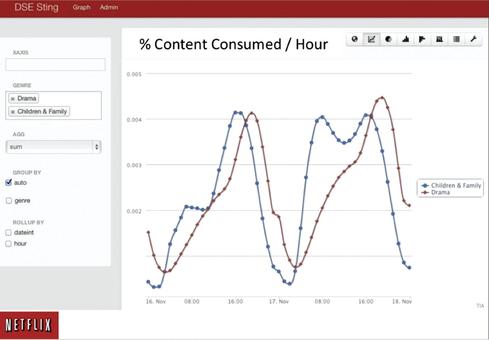The Visual Organization author Phil Simon discusses why data matters more than ever, and how it's easiest to act on what you can see.

about their users and customers via dataviz. Why? At a high level, they get it. Data matters more than ever, and it's easiest to act on what you can see.
The book contains a wide array of case studies. I specifically chose a tech behemoth in Netflix, a startup (social polling platform Wedgies), and an academic institution, the University of Texas system. I wanted to demonstrate that the notion of a visual organization isn't confined to billion-dollar enterprises.
[Click here to see a video of how AutoDesk used dataviz tools to show how the company's structure has changed over the years.]
That's the good news. On the other hand, laggards and general resistance are everywhere. There are far too many small, mid-sized, and large organizations that ignore or minimize the potential impact of data.
IW: In most cases, the C-suite isn't going to initiate the deployment of dataviz tools. Should a small team pitch a dataviz strategy to senior leadership to get the ball rolling?
PS: Well, that's one option, but employees at visual organizations tend not to ask for permission. The rise of cloud-based, SaaS, and open-source software collectively mean that a top-down deployment process is no longer required. This is not 1998. Drawn-out RFI and RFP processes lead to missed opportunities.
While it's important to follow internal governance rules, waiting a year or more to deploy a new dataviz tool can cost a business dearly. Bottom-up approaches can quickly generate results and excitement throughout the company.
IW: So it does not have to start with the IT department?
PS: Absolutely not. I believe that the lines of business should "own" their data.
IW: You begin the book with the story of the dataviz vendor Tableau's IPO. Smaller vendors are developing powerful dataviz tools, but Microsoft, Oracle, and IBM are in the dataviz game too. What are the pros and cons of going with a large vendor?
PS: Well, there's something to be said for one-stop shopping. All else being equal, it shouldn't be too hard to get a single vendor's products to talk to each other, although I've seen completely disparate systems and applications stitched together in my years as a consultant.
Adding a new vendor into the equation means signing new contracts, incurring risk, developing new relationships, and (potentially) fulfilling new integration requirements.
However, large vendors like Oracle, Microsoft, and IBM have their hands in many pots. It doesn't mean that they make "bad" dataviz products. It only means that their priorities aren't concentrated on one area. Best-of-breed vendors, however, have but one mission: To improve the functionality of their tools.
IW: Will we see more visual organizations over the next five years?
PS: Yes. Big data isn't going anywhere and visualizing data helps organizations and their employees make sense of a mass of data. More case studies will appear. In this sense, it's just another point on the technology adoption lifecycle.
Interop Las Vegas, March 31 - April 4, 2014, brings together thousands of technology professionals to discover the most current and cutting-edge technology innovations and strategies to drive their organizations' success, including BYOD security, the latest cloud and virtualization technologies, SDN, the Internet of things, Apple in the enterprise, and more. Attend educational sessions in eight tracks, hear inspirational and industry-centric keynotes, and visit an Expo Floor that brings over 350 top vendors together. Register for Interop Las Vegas with Discount Code MPIWK for $200 off Total Access and Conference Passes.
About the Author(s)
You May Also Like







